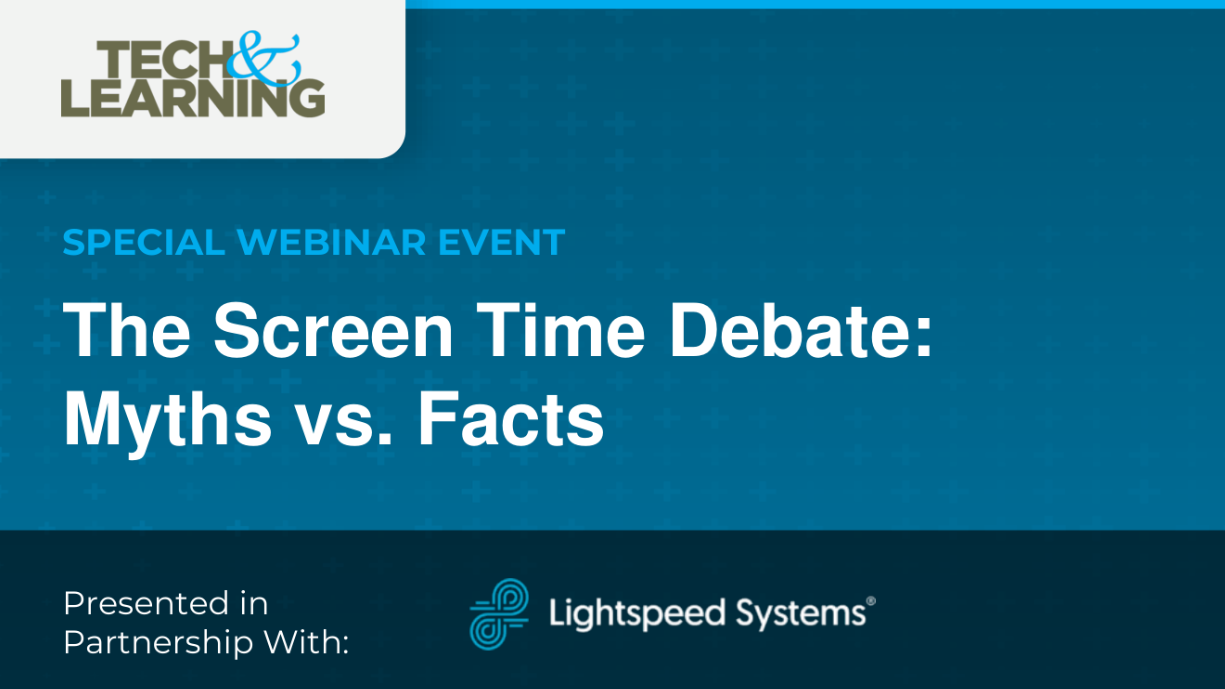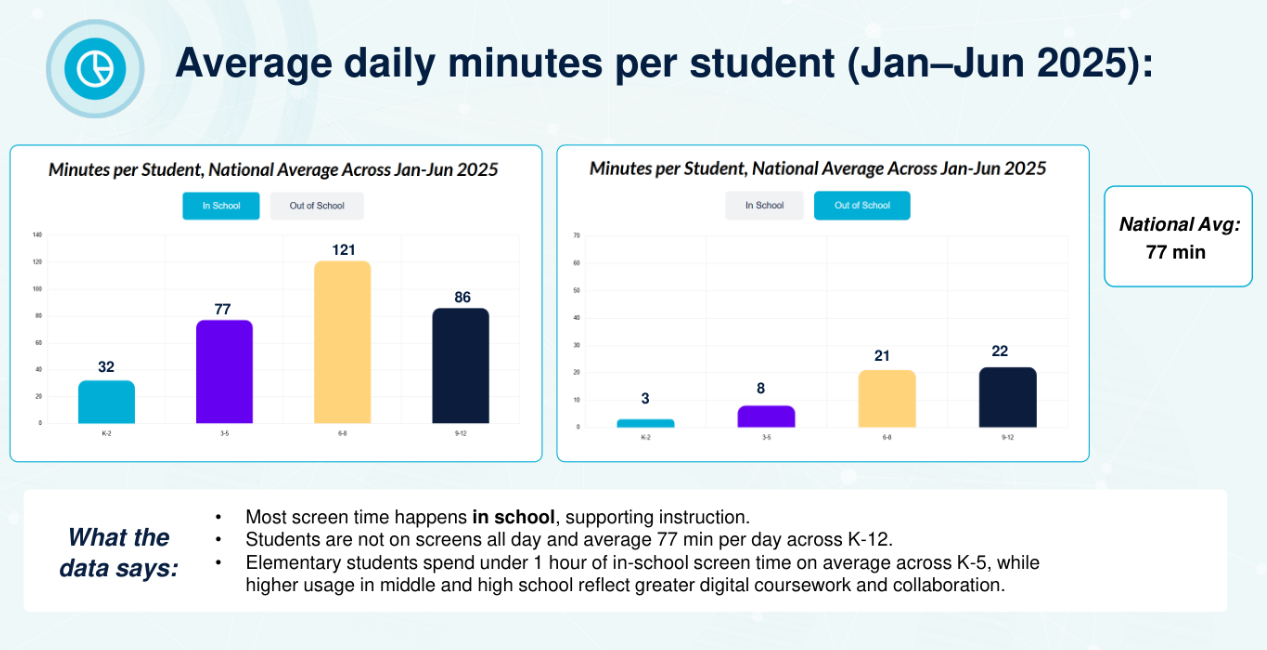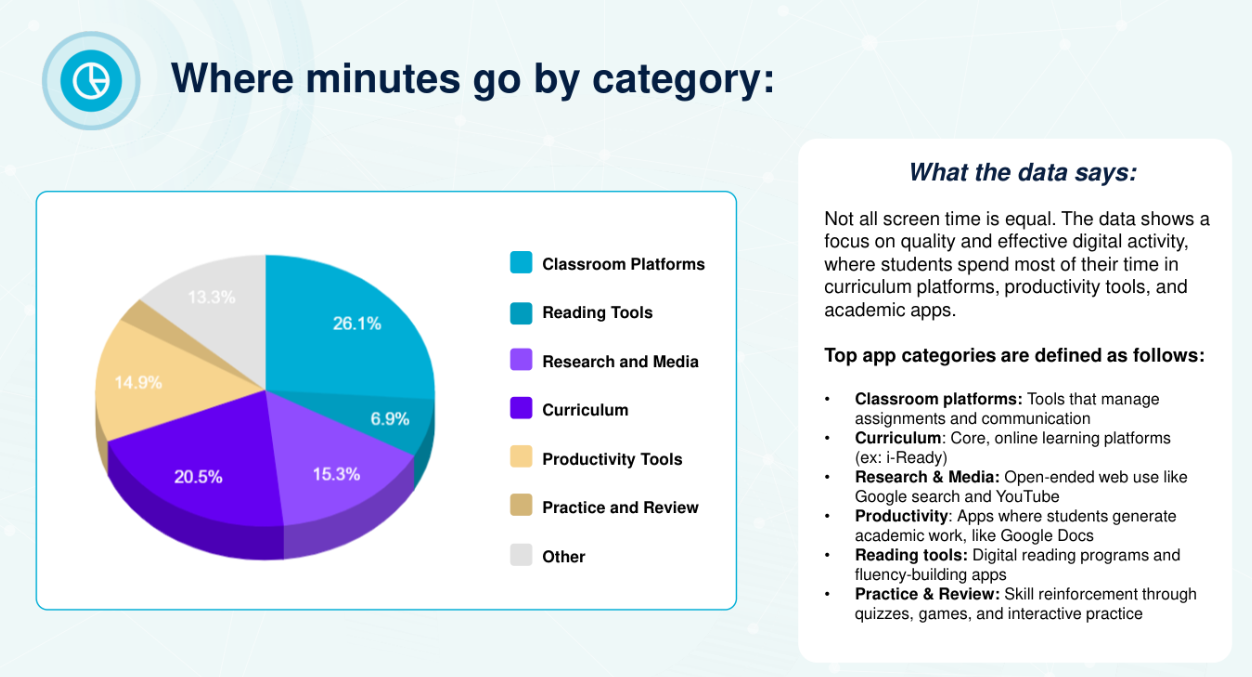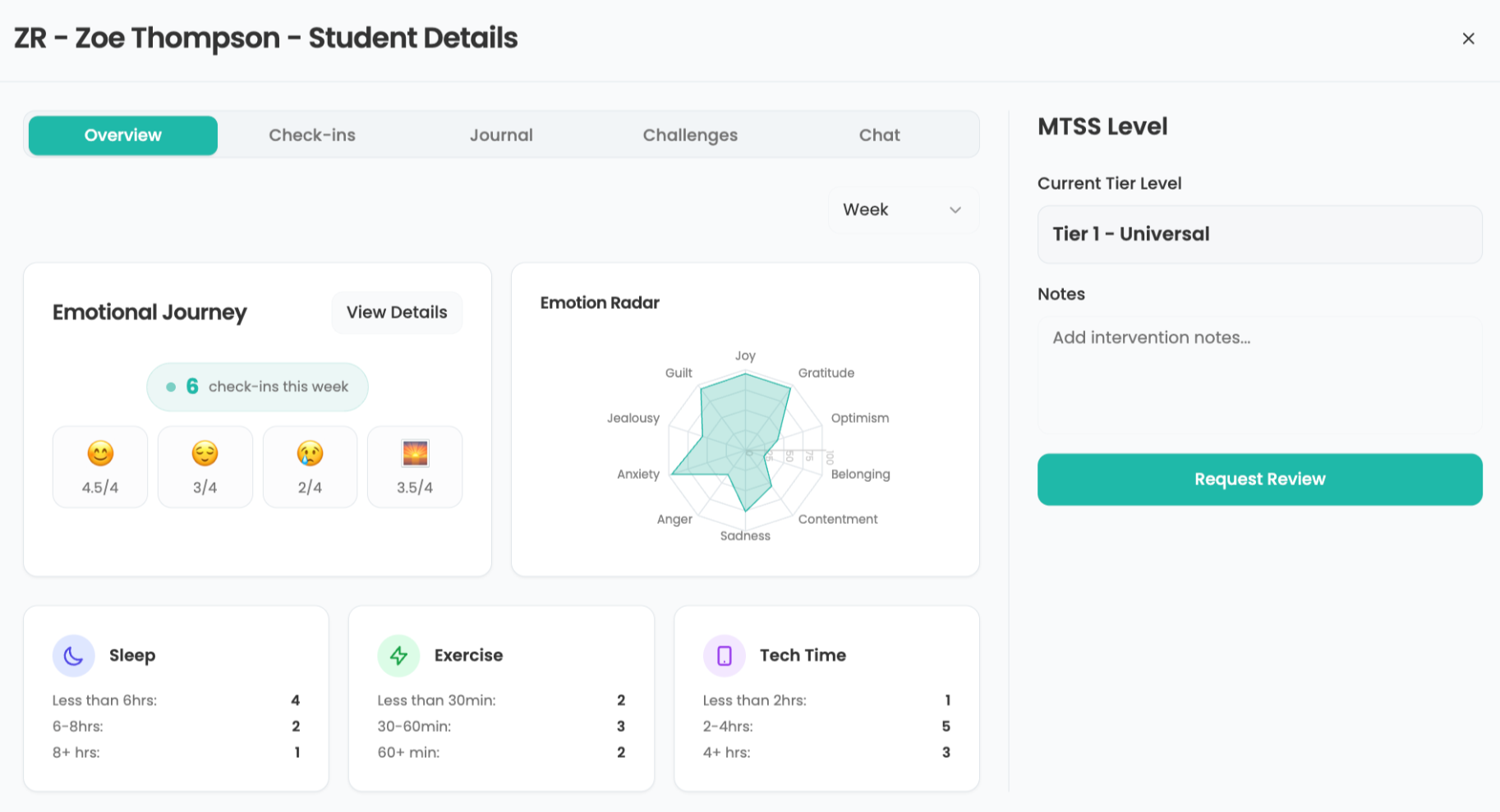The Screen Time Debate: Myths vs. Facts
The recent Tech & Learning webinar, sponsored by Lightspeed Systems, explored what’s really happening with screen time, and what it means for schools.

Phones in class? Tablets at home? Everyone's got an opinion — but what does the data say?
The results from a national survey of school districts around student screen time and its impact on learning was the focus of a recent webinar sponsored by Lightspeed Systems. Hosted by Christine Weiser, Content Director for Tech & Learning, the discussion featured Amy Bennett, Chief Of Staff for Lightspeed Systems, Kyle Berger, Chief Technology Officer at Grapevine-Colleyville ISD, and Charles Franklin, Assistant Superintendent for Cypress Fairbanks ISD. The panel explored the realities of student screen time, challenging common misconceptions with data and expert insights.
“Chances are the majority of y'all looked at the screen of your phone before your feet touched the earth this morning,” said Berger. “It's just a natural addiction that everybody seems to have.”
WATCH THE WEBINAR ON DEMAND HERE
Key Data and Misconceptions

A significant finding from Lightspeed Insight, based on data from hundreds of school districts, reveals that K-12 students spend an average of 77 minutes of screen time per day on district-owned devices. This constitutes less than 20% of the average school day, a figure considerably lower than many parents and policymakers assume. The majority of this screen time occurs within school hours, supporting instruction, rather than after school.
Screen time averages vary by age, with elementary students using devices for less than an hour daily, while middle and high schoolers spend more time online due to increased coursework and collaboration. The data also shows a seasonal tapering of screen time throughout the school year, aligning with instructional rhythms, holidays, and testing periods, generally staying below 90 minutes a day. This consistency suggests that digital learning is integrated into instruction rather than replacing it.

A crucial takeaway is the shift from "quantity to quality" of screen time. The 77 minutes average is predominantly spent on curriculum platforms, productivity tools (such as Google Docs), and academic apps, not on "doom scrolling" or entertainment. This highlights the importance of the purpose behind screen use – whether it's for creating, researching, collaborating, or building fluency. Tools such as content filtering and classroom management are vital for establishing "digital guardrails" to ensure students remain focused on educational applications.
Tools and ideas to transform education. Sign up below.
"Screen time is tied to mental health, to student engagement, to educational outcomes, school budgets, even topics like AI,” said Bennett. “Really, all the hot topics that are going on in edtech, screen time relates to them."
Educating the Community and Addressing Concerns
Both Berger and Franklin emphasized the ongoing battle against the misconception that students are constantly glued to their devices.
“As you reflect and spend time walking your schools and looking, you'll probably agree that there's probably a very, very small amount of students that are glued to a screen eight hours a day,” Berger said. “It's just not happening. So that misconception is really big."
“We have the same type of misconceptions where parents and the community feel like the students are on their screens constantly," Franklin added. “And I do think that some of the misconception comes from when students get home. We're not necessarily mirroring the exact environment that you may or may not have at home."
Grapevine-Colleyville ISD, a one-to-one district for over 13 years, and Cypress Fairbanks ISD, a one-to-one take-home district since the pandemic, actively educate their communities through professional development for teachers and Parent Tech Academies. These initiatives break down the different types of screen time (passive, active, and required for assessments) and communicate the districts' expectations and boundaries.
The districts also work to engage parents to help manage screen time.
"We go as far as to encourage our parents to participate, and we do a device-free dinner,” said Berger. “Once a year, we invite people out to the local restaurant. We lock up their cell phones and say, ‘Hey. If you can make it through dinner without looking at a device in general, our partners will help sponsor your dinner for you.’"
Impact of Cell Phone Bans and Equity
The implementation of House Bill 1481 in Texas, banning cell phones in schools, has been overwhelmingly positive. Teachers and principals reported increased student engagement in class activities and more direct student-to-student interaction. While some initial "withdrawal" was observed among students, and parents expressed anxiety about connectivity to their children, the ban ultimately reinforced existing policies and led to a re-education on student safety protocols.
Regarding equity, both Berger and Franklin highlighted their districts’ commitment to providing equal access to technology. This includes pre-K through 12 one-to-one device programs and providing wireless hotspots for students lacking home internet access.
The panelists stressed that while restrictions such as cell phone bans can create more equal usage, blanket screen time limits on district devices could widen gaps for students who rely solely on these devices for learning and connectivity. The consensus was to find ways to make the use of technology safe, protected, and healthy by teaching digital citizenship and self-regulation skills.
Advice For Districts
For districts feeling overwhelmed, the experts advised starting with data – whether from surveys, software such as Lightspeed Insight, or observations. This data should initiate open conversations within the community, involving curriculum and instruction teams, teachers, and parents, to establish shared expectations for screen time usage. The goal is to define what is appropriate for each campus and district, understanding that every community is unique.
Said Franklin: “A lot of it is explaining to the parents exactly what students have access to, showing them exactly what our approved applications are, explaining exactly what screen time looks like for every grade level, and also engaging our CTE and those departments to also explain exactly what boundaries we have and what opportunities we have because it does work both ways."
Ray Bendici is the Managing Editor of Tech & Learning and Tech & Learning University. He is an award-winning journalist/editor, with more than 20 years of experience, including a specific focus on education.
